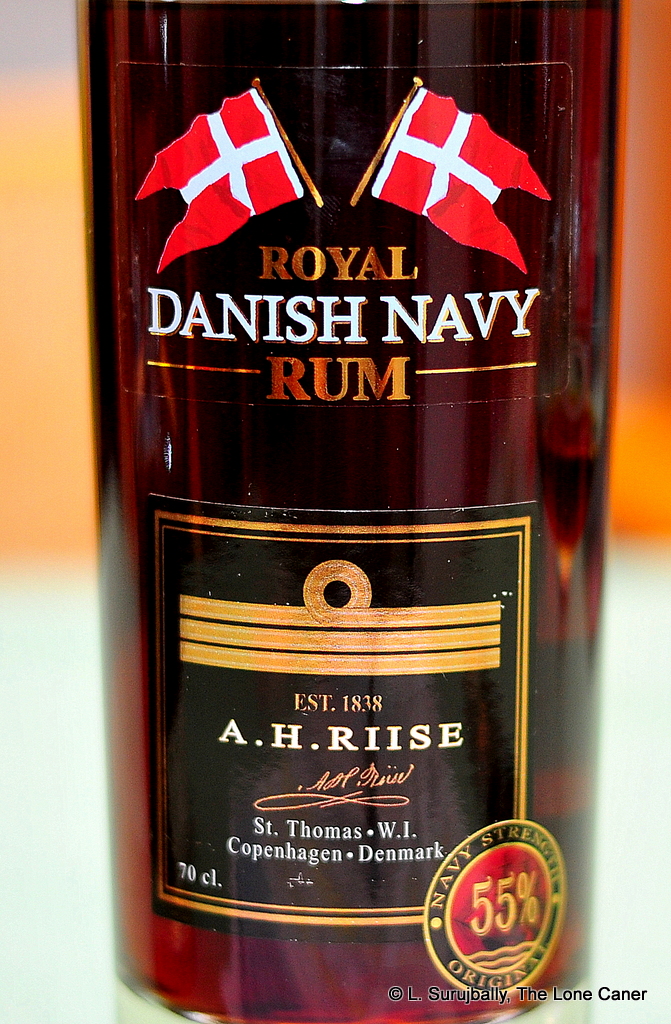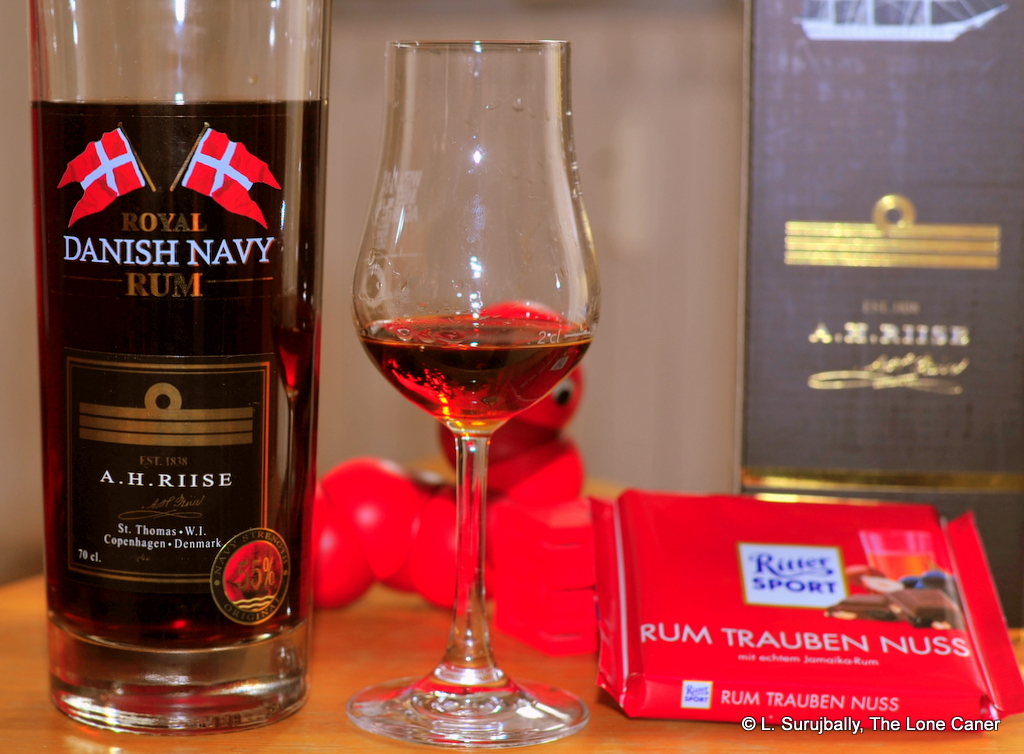Aside from their premium “Wild Series” line of rums with their striking black and white labels and dizzying proof points, the relatively new Danish indie Rom Deluxe also has various downmarket rum offerings. One step down from “Wild” is the Collector’s Series, originally meant to capture rums that were not quite as strong as the former but retaining much of the quality. On the face of it and perusing the listings, I don’t honestly see much difference, however, aside perhaps in a lower price.
The subject of today’s review is the first batch of Release 3 which hails from Bellevue, which can lead to some confusion since there are three places (maybe more) with that rather common name — suffice to say it’s from Le Moule on Guadeloupe, and made by Damoiseau (see “other notes”, below). Unusually for the French islands, it’s a molasses based rum, column still, distilled in 1998 and bottled in 2021 — and so aged a whopping 23 years in a combination of both tropical and continental — at a solid 55.5% (another batch has a slightly higher proof point of 56.1%). Stats like that have the nerd brigade crossing their eyes and drooling, and not just in Denmark; with good reason, since we see such ageing from French island rums only rarely.
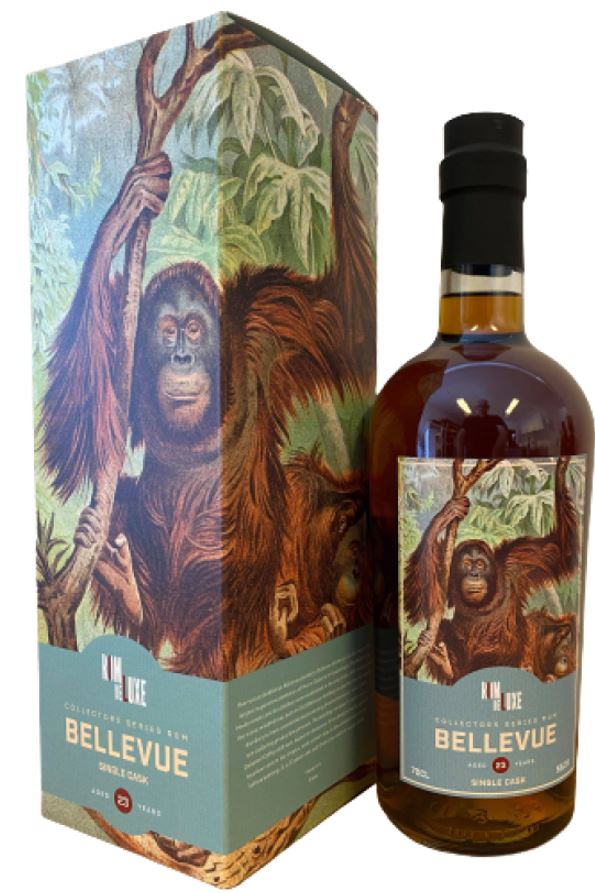 The rum, fortunately, did not disappoint. The nose was middle-of-the-road complex, a Goldilocks-level symphony of just about enough, never too much and rarely too little. The nose was slightly briny, but not a Sajous level-salt wax explosion. It had fruits, but was not an ester-bomb – peaches, apples, melons, apricots, flambeed bananas. A little smoke, a little wood, noting overbearing, and all these notes were balanced off with a pleasant melange of breakfast spices, cinnamon, vanilla, caramel and a touch of licorice.
The rum, fortunately, did not disappoint. The nose was middle-of-the-road complex, a Goldilocks-level symphony of just about enough, never too much and rarely too little. The nose was slightly briny, but not a Sajous level-salt wax explosion. It had fruits, but was not an ester-bomb – peaches, apples, melons, apricots, flambeed bananas. A little smoke, a little wood, noting overbearing, and all these notes were balanced off with a pleasant melange of breakfast spices, cinnamon, vanilla, caramel and a touch of licorice.
The palate settled down a bit and continued to channel an approach that eschewed the screeching sharp vulgarity of a fishwife’s flensing knife and went with something more moderate. There was salt caramel ice cream in Irish coffee, topped with whipped cream. Vanilla and brine, stewed apples, green peas, light pineapples, peaches in syrup. Things got a little odd somewhere in the middle of all this when distinct notes of wet ashes, rubber and iodine came out. These however, didn’t stick around long and gave way to a dry, short, crisp finish redolent of strong hot black tea (sweetened with condensed milk), acetones, nail polish, brine and a last filip of toffee.
The whole rum, the entire sipping and drinking experience, really was very good. I like to think it channelled that school of thought propounded by Hesiod and Plautus (among many others) who promoted moderation in all things (“…including moderation,” quipped Oscar Wilde centuries later). It’s tasty without overdoing it, it’s firm without bombast, assertive where needed, one of the better rums coming off the island, and honestly, one can only wonder what made Rom Deluxe relegate a rum like this to the Collector’s Series and not to the more upmarket Wilds.
No matter. Whatever category it’s placed in, it’s really worth checking out of it ever turns up in your vicinity. I doubt you’d be disappointed.
(#910)(86/100) ⭐⭐⭐⭐
Other notes
- Outturn 258 bottles
- Marque GMBV
- The label and the stats are the same on both the 55.5% R3.1 and the 56.1% R3.2, except for the strength.
- The rum is not an agricole, given it was made from molasses; this twigged a lot of people into believing it was not from MG BEllevue…but from Damoiseau (see next comment)
- Note on origins: Originally this review mentioned Bellevue as being “…on the small island of Marie Galante just south of Guadeloupe (other distilleries there are Pere Labat and Velier/Capovilla at Poisson, and Bielle).” However, several people alerted me to overlooked inconsistencies here, because there is Bellevue on Marie Galante, another Bellevue at Le Moule in Guadeloupe (that’s Damoiseau’s place) and a third in Sainte Rose, also in Guadeloupe (which is Reimonenq). Because such confusions had arisen before (e.g. the TBRC 1999 Bellevue) most commentators felt it was a Damoiseau rum. I got onto Kim Pedersen at Rom Deluxe and he wrote back “…you are right about the misprint on our website. It is a Bellevue from Damoiseau
 […] there has been a lot of confusion about these rums, and I can see that my text on the webpage is more misleading than informative. So I think I have to change that despite the bottles is sold out.” So that means the review’s “sources” paragraph, and my title has been changed.
[…] there has been a lot of confusion about these rums, and I can see that my text on the webpage is more misleading than informative. So I think I have to change that despite the bottles is sold out.” So that means the review’s “sources” paragraph, and my title has been changed.
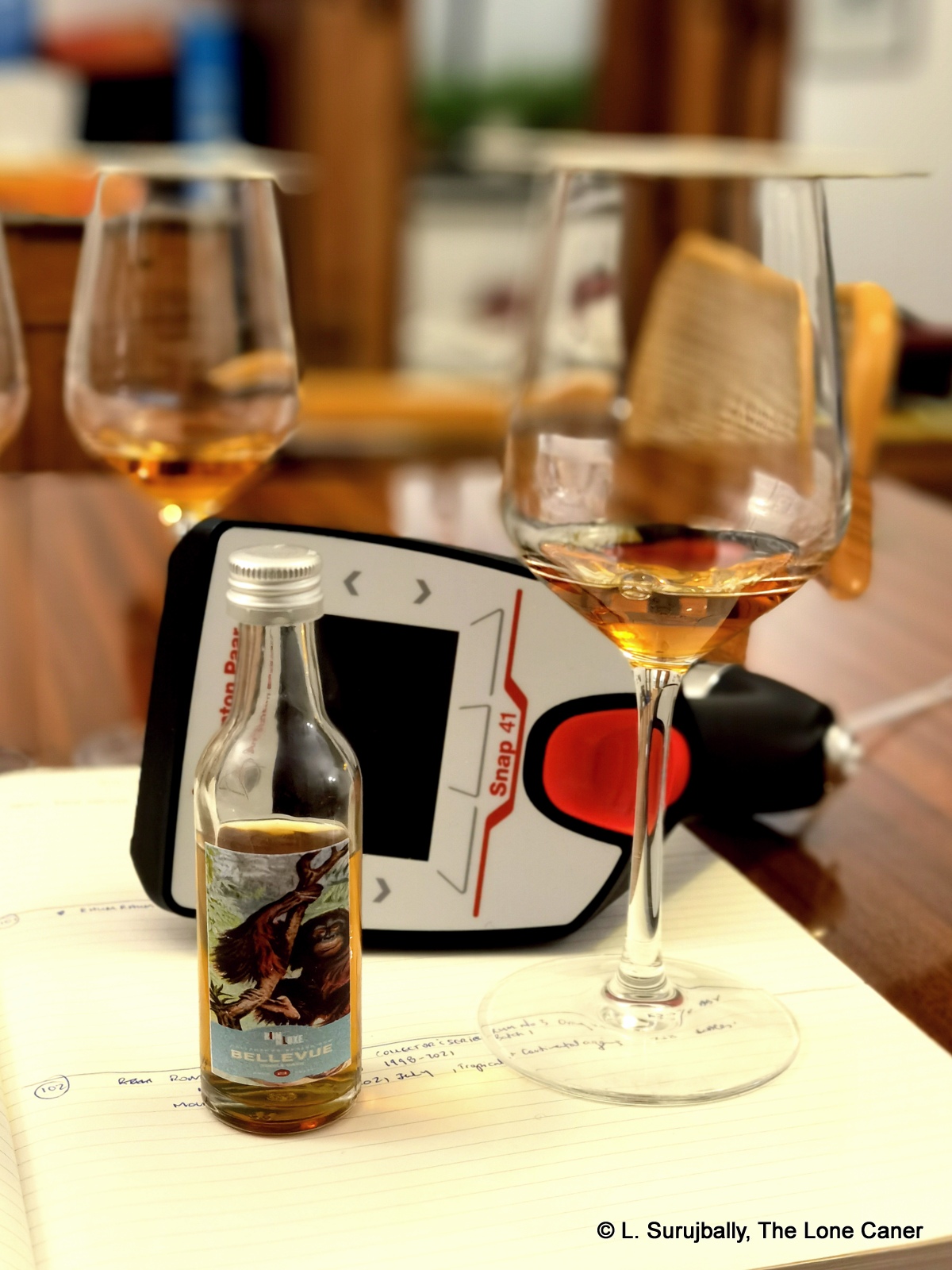
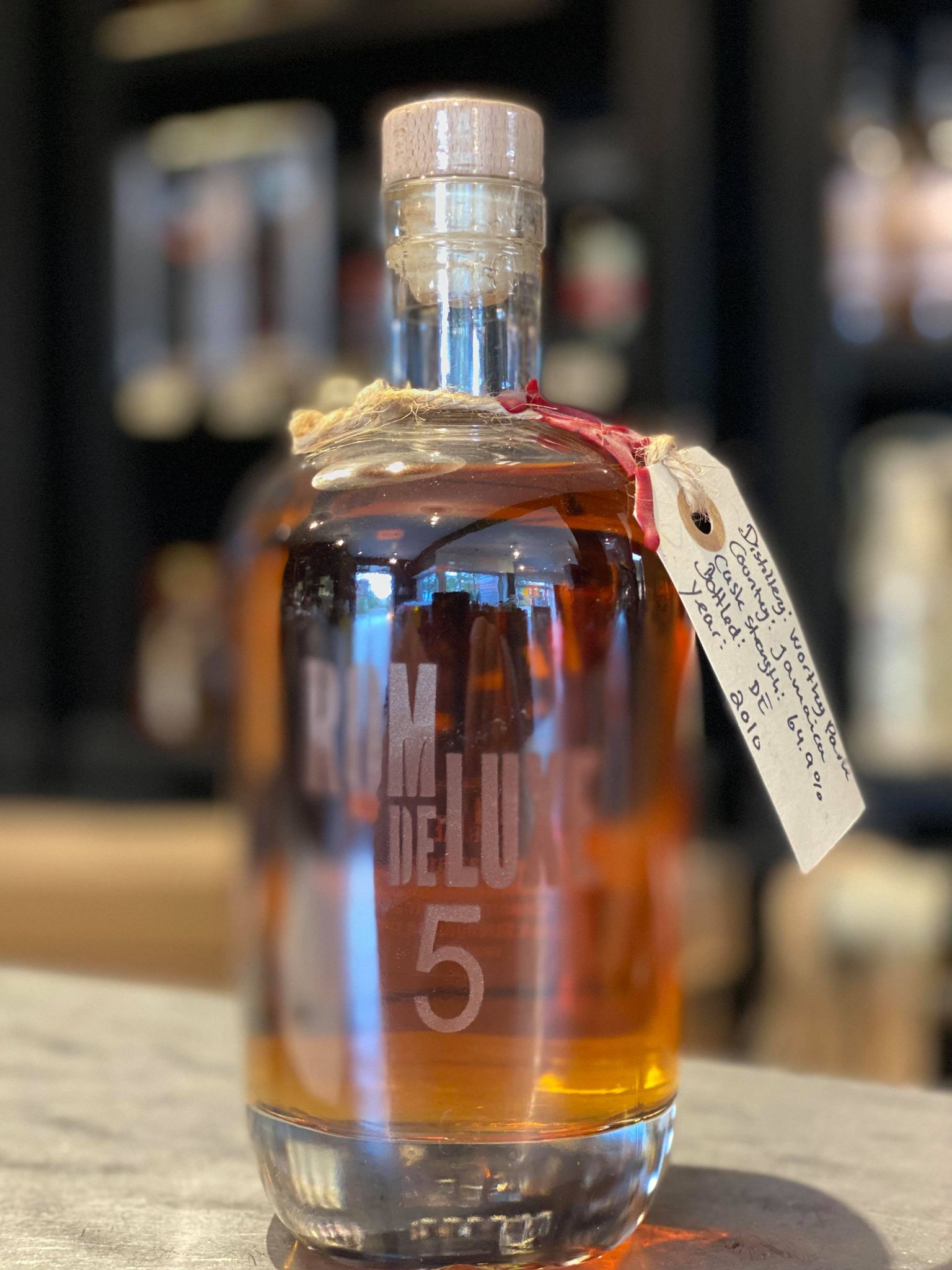
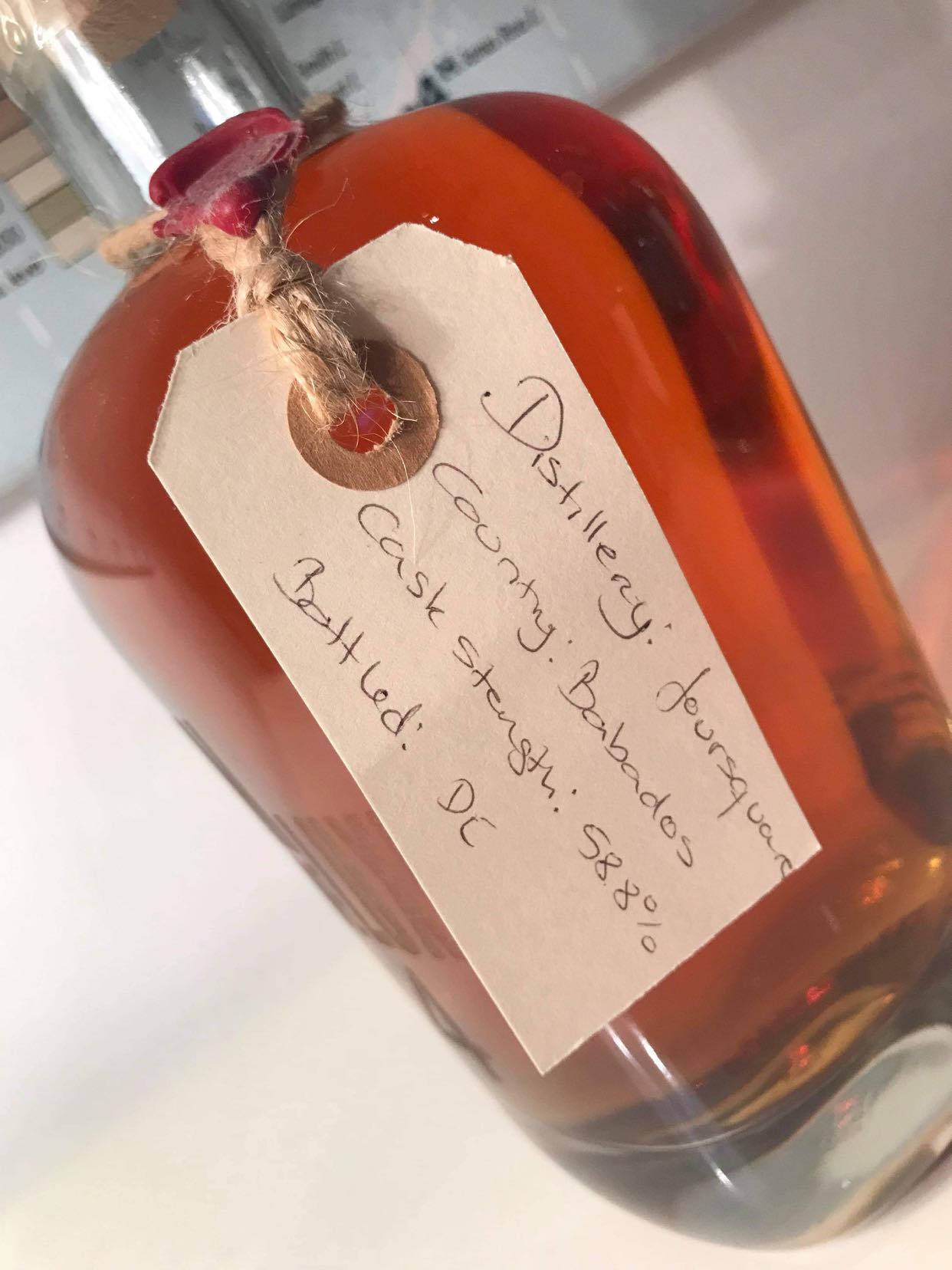
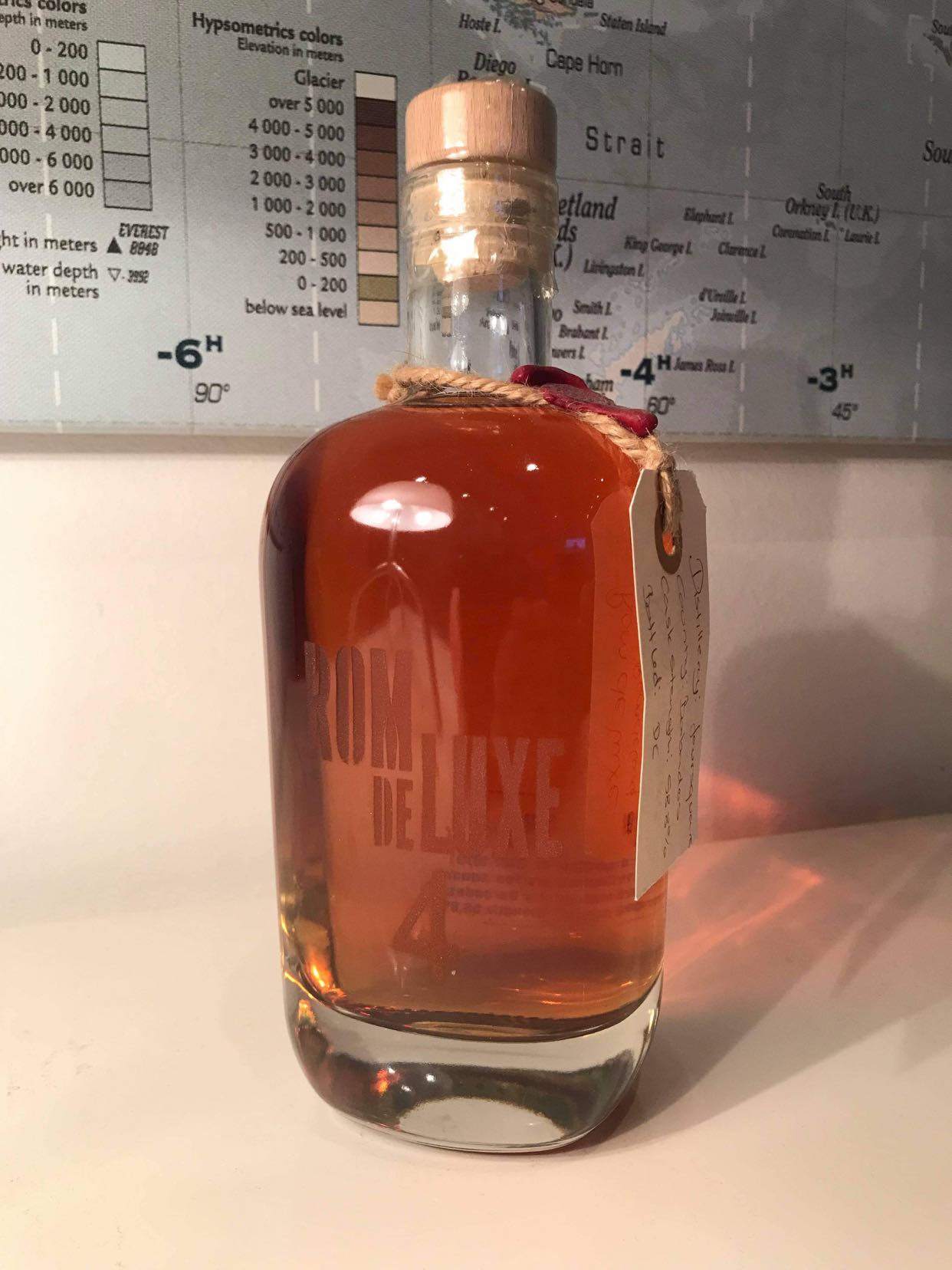

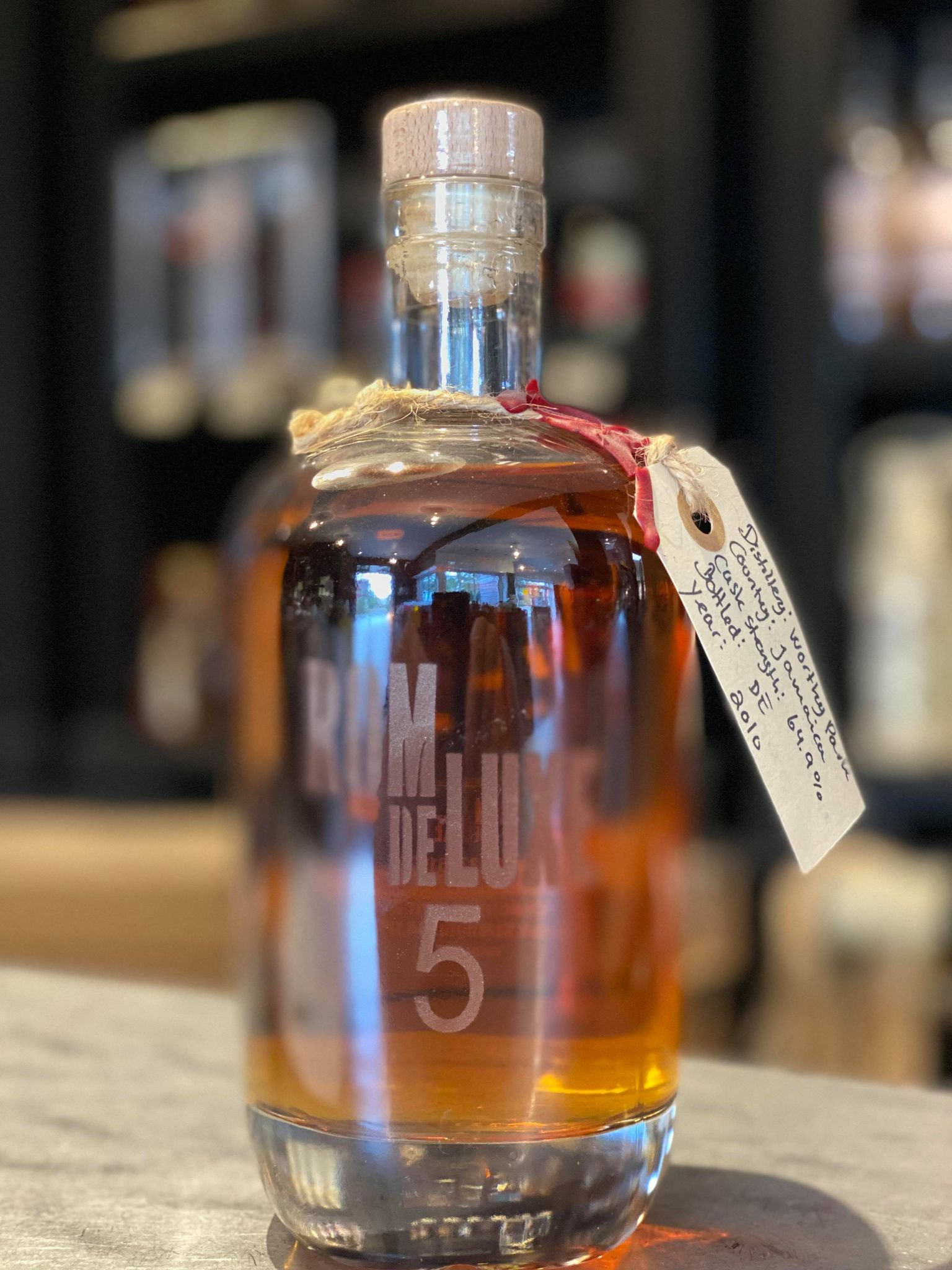
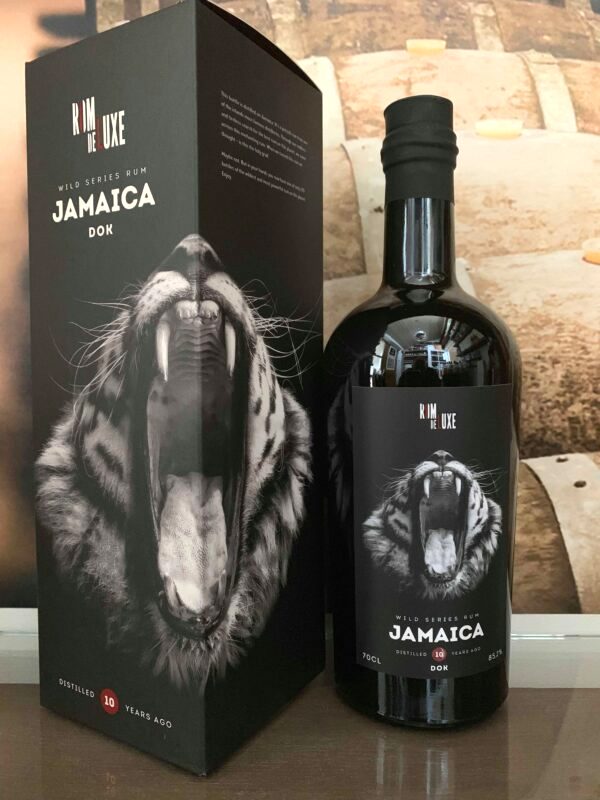
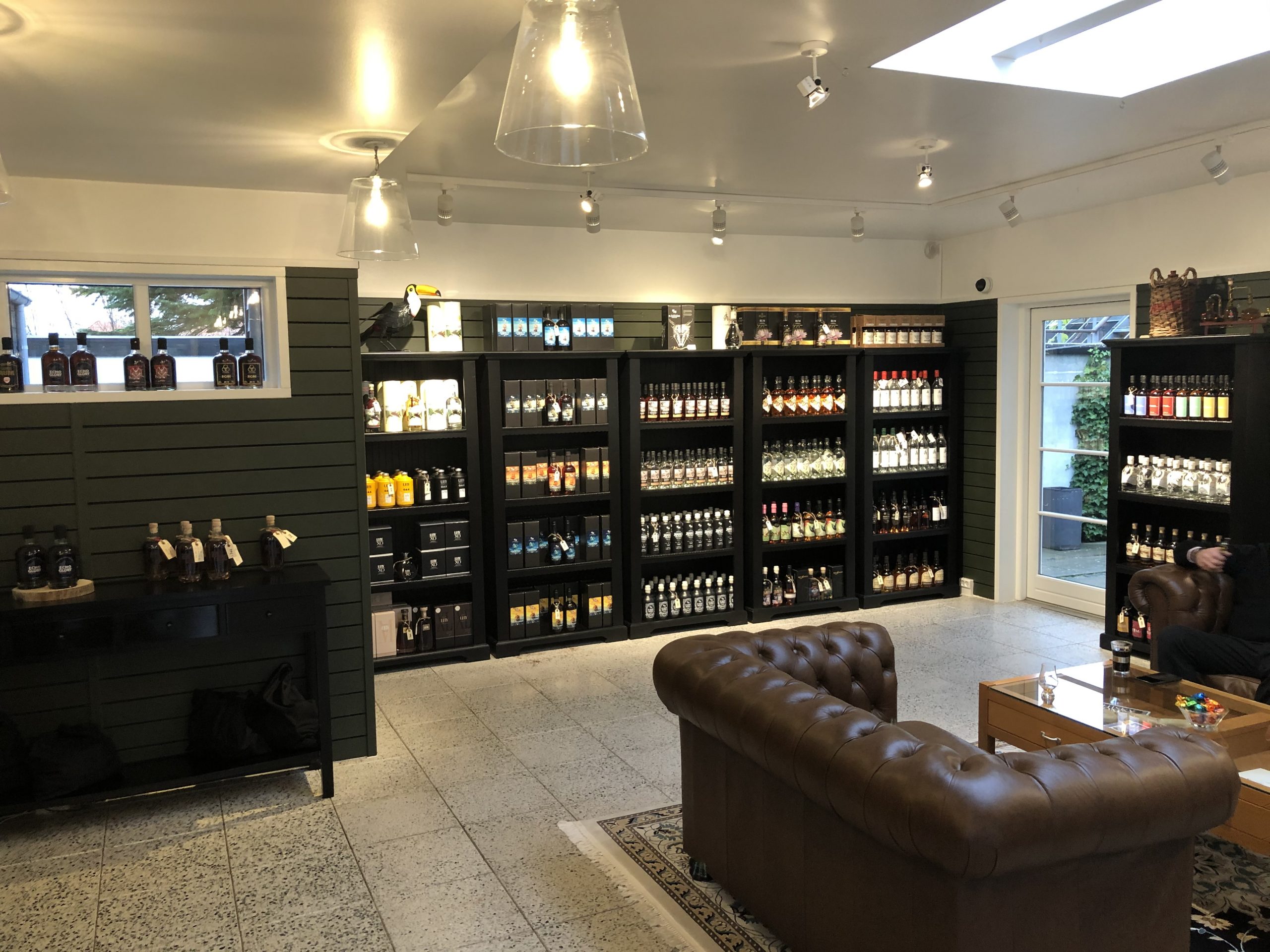
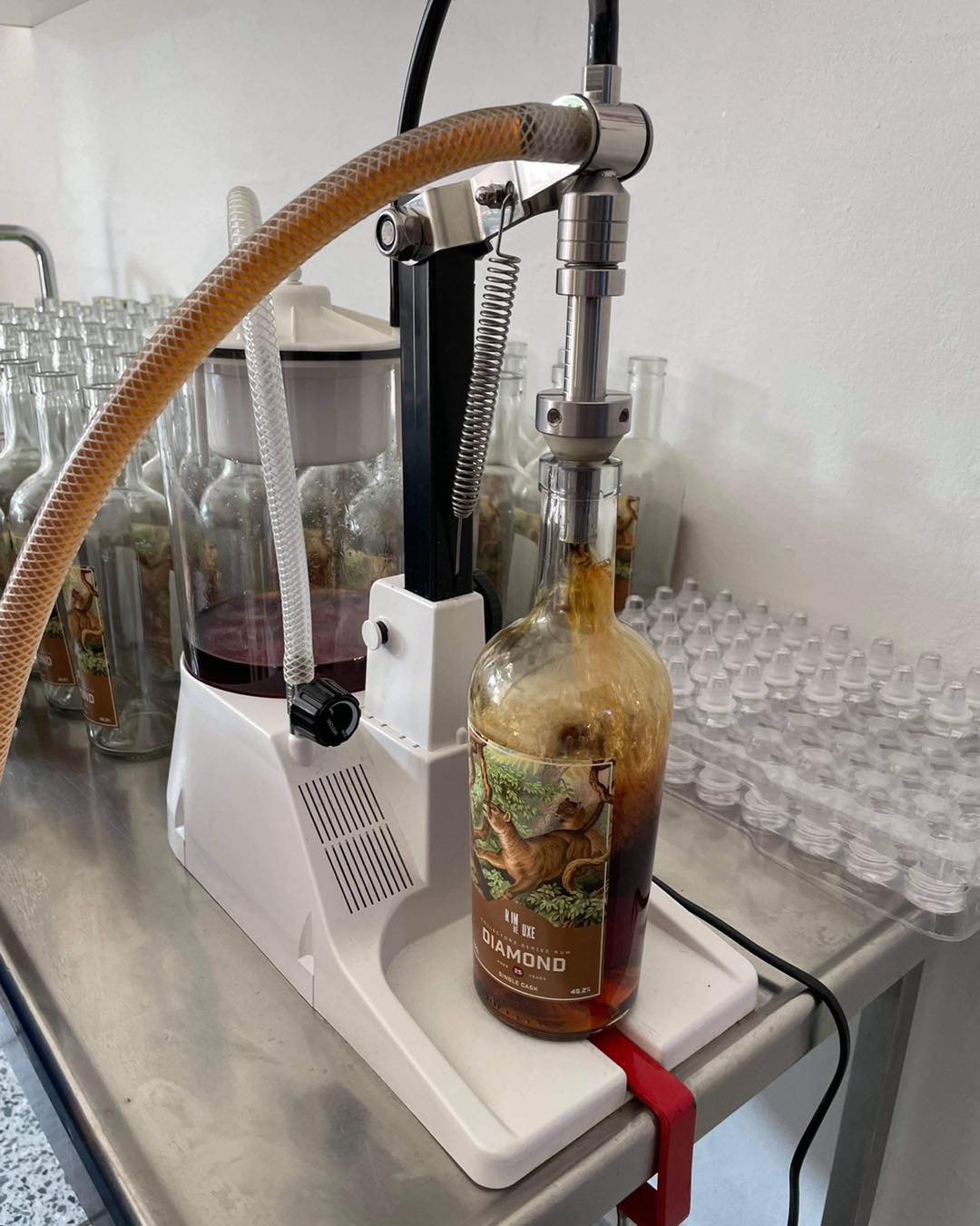


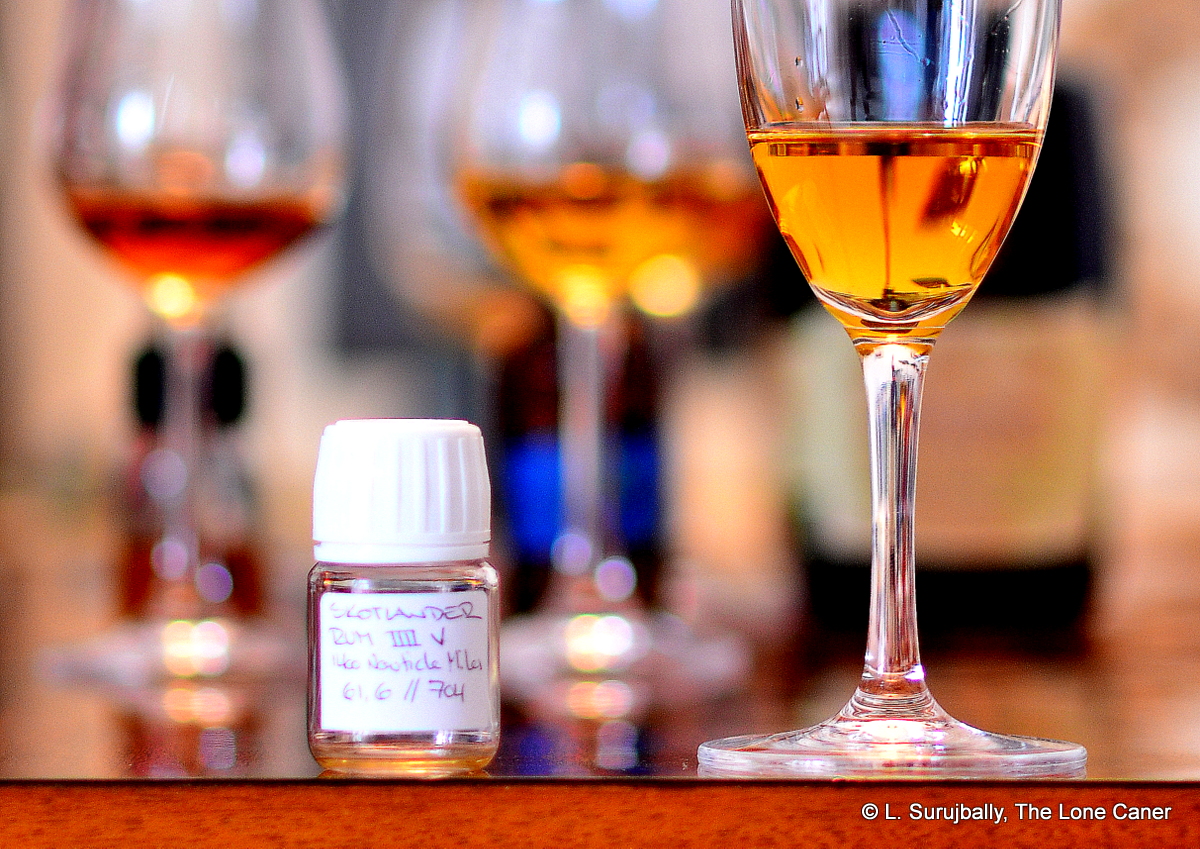
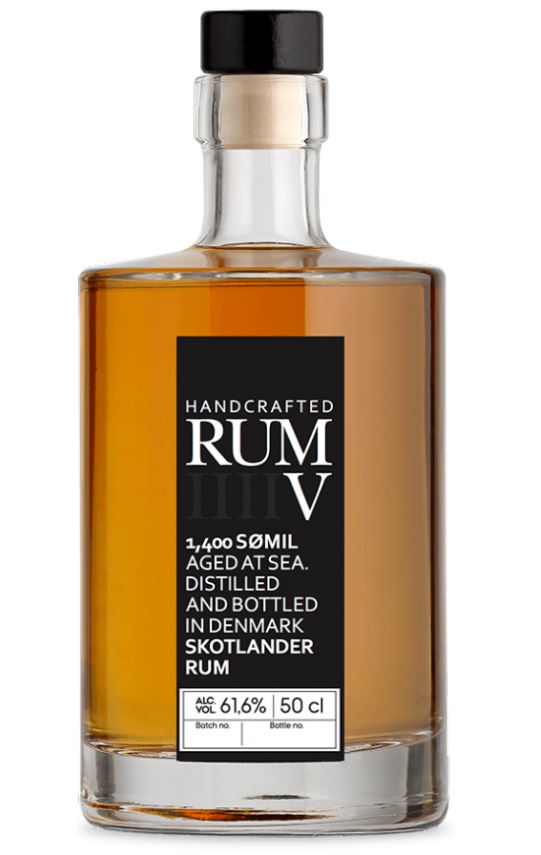 Rums made from scratch by some small new micro-distillery in a country other than the norm are often harbingers of future trends and can bring – alongside the founders’ enthusiasm – some interesting tastes to the table, even different spirits (<<cough>> ‘Murrica!!). But Skotlander, to their credit, didn’t mess around with ten different brandies, gins, vodkas, whiskies and what have you, and then pretended they were always into rum and we are now getting the ultimate pinnacle of their artsy voyage of discovery. Nah. These boys started with rum, bam! from eight o’clock, day one.
Rums made from scratch by some small new micro-distillery in a country other than the norm are often harbingers of future trends and can bring – alongside the founders’ enthusiasm – some interesting tastes to the table, even different spirits (<<cough>> ‘Murrica!!). But Skotlander, to their credit, didn’t mess around with ten different brandies, gins, vodkas, whiskies and what have you, and then pretended they were always into rum and we are now getting the ultimate pinnacle of their artsy voyage of discovery. Nah. These boys started with rum, bam! from eight o’clock, day one. 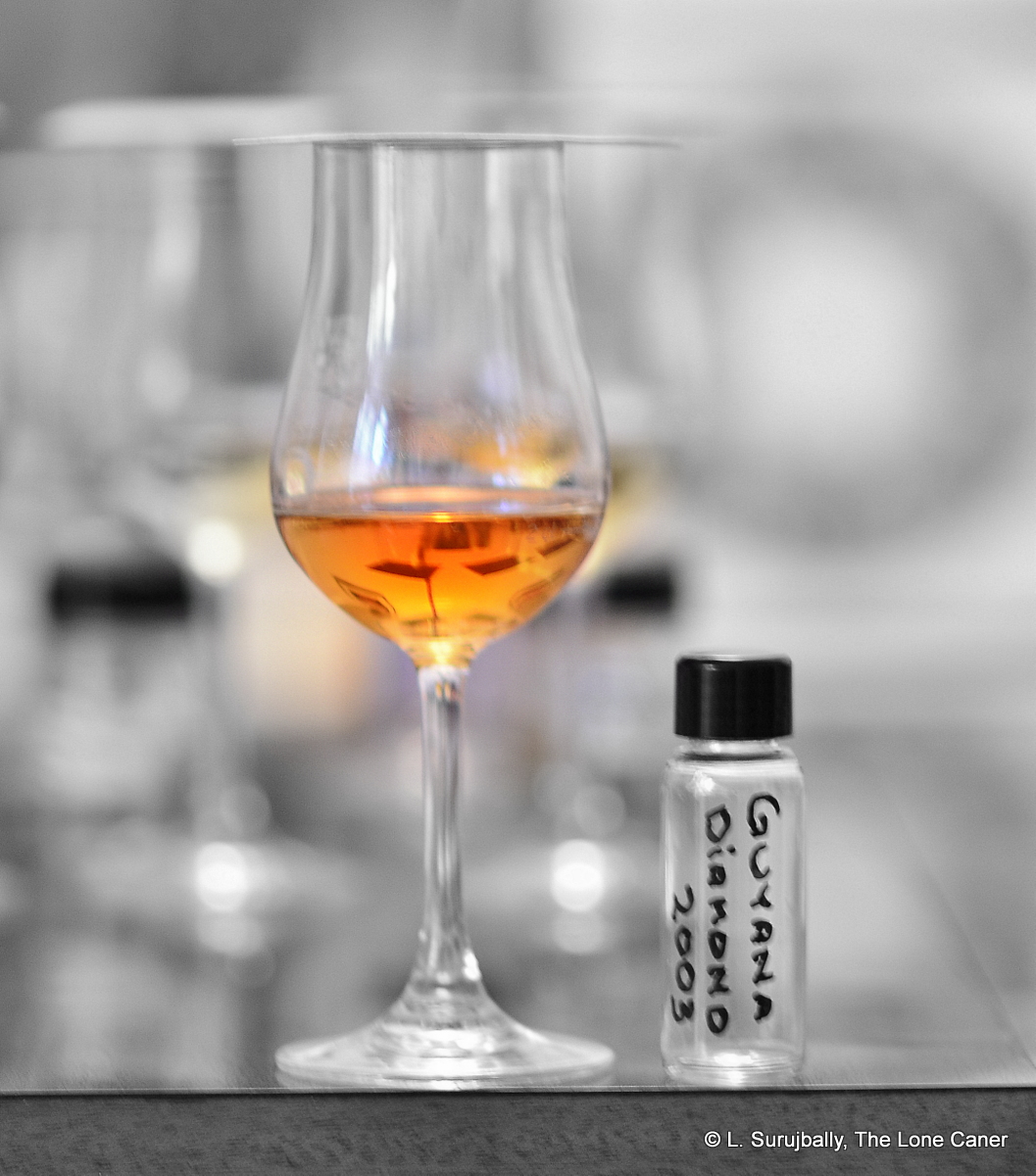
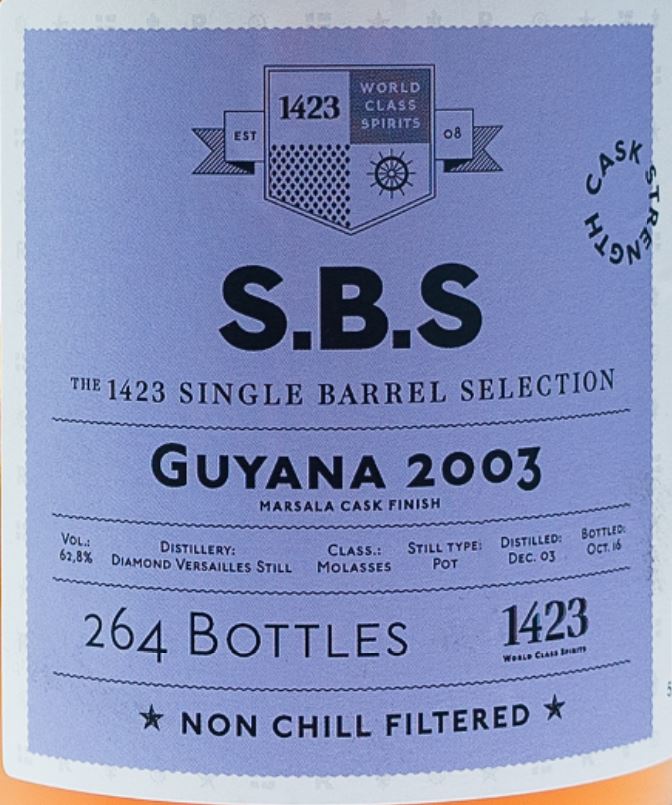 My own preference has always been for the stern elegance of the Port Mourant, and the Enmore coffey still produces rums that are complex, graceful and sophisticated when done right. But the Versailles still is something of an ugly stepchild – you’ll go far and look long to find an unqualified positive review of any rum it spits out. I’ve always felt that it takes rare skill to bring the rough and raw VSG pot still profile to its full potential…none of the familiar indies has had more than occasional success with it, and even Velier never really bothered to produce much Versailles rum at the height of
My own preference has always been for the stern elegance of the Port Mourant, and the Enmore coffey still produces rums that are complex, graceful and sophisticated when done right. But the Versailles still is something of an ugly stepchild – you’ll go far and look long to find an unqualified positive review of any rum it spits out. I’ve always felt that it takes rare skill to bring the rough and raw VSG pot still profile to its full potential…none of the familiar indies has had more than occasional success with it, and even Velier never really bothered to produce much Versailles rum at the height of 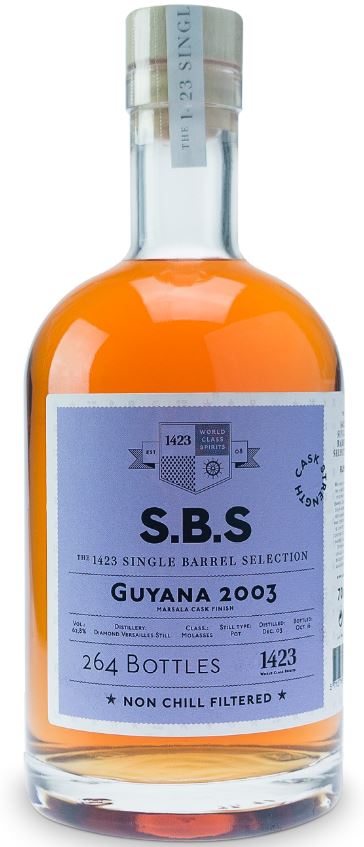 There has been occasional confusion among the stills in the past: e.g. the
There has been occasional confusion among the stills in the past: e.g. the 
 Things calmed down when Johnny Drejer approached, though, because in his fist he carried a bottle a lot of us hadn’t seen yet – the second in Romdeluxe’s “Wild Series” of rums, the Guyanese Enmore, with a black and white photo of a Jaguar glaring fiercely out. This was a 61.5% rum, 17 years old (2002 vintage, I believe), from one of the wooden stills (guess which?) — it had not formally gone on sale yet, and he had been presented with it for his 65th birthday a few days before (yeah, he looks awesome for his age). Since we already knew of the elephantine proportions of the
Things calmed down when Johnny Drejer approached, though, because in his fist he carried a bottle a lot of us hadn’t seen yet – the second in Romdeluxe’s “Wild Series” of rums, the Guyanese Enmore, with a black and white photo of a Jaguar glaring fiercely out. This was a 61.5% rum, 17 years old (2002 vintage, I believe), from one of the wooden stills (guess which?) — it had not formally gone on sale yet, and he had been presented with it for his 65th birthday a few days before (yeah, he looks awesome for his age). Since we already knew of the elephantine proportions of the 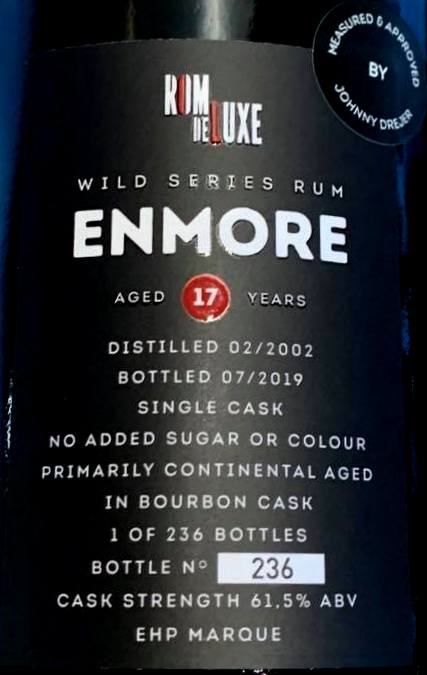 So far there is a tiger (R1 Hampden, Jamaica), jaguar (R2 Enmore, Guyana), puma (R3 Panama), black panther (R4 Belize), lion (R5, Bellevue, Guadeloupe) and leopard (R6 Caroni, Trinidad). I don’t know whether the photos are commissioned or from a stock library – what I do know is they are very striking, and you won’t be passing these on a shelf any time you see one. The stats on some of these rums are also quite impressive – take, for example, the strength of the Wild Tiger (85.2% ABV), or the age of the Wild Lion (25 years). These guys clearly aren’t messing around and understand you have to stand out from an ever more crowd gathering of indies these days, if you want to make a sale.
So far there is a tiger (R1 Hampden, Jamaica), jaguar (R2 Enmore, Guyana), puma (R3 Panama), black panther (R4 Belize), lion (R5, Bellevue, Guadeloupe) and leopard (R6 Caroni, Trinidad). I don’t know whether the photos are commissioned or from a stock library – what I do know is they are very striking, and you won’t be passing these on a shelf any time you see one. The stats on some of these rums are also quite impressive – take, for example, the strength of the Wild Tiger (85.2% ABV), or the age of the Wild Lion (25 years). These guys clearly aren’t messing around and understand you have to stand out from an ever more crowd gathering of indies these days, if you want to make a sale.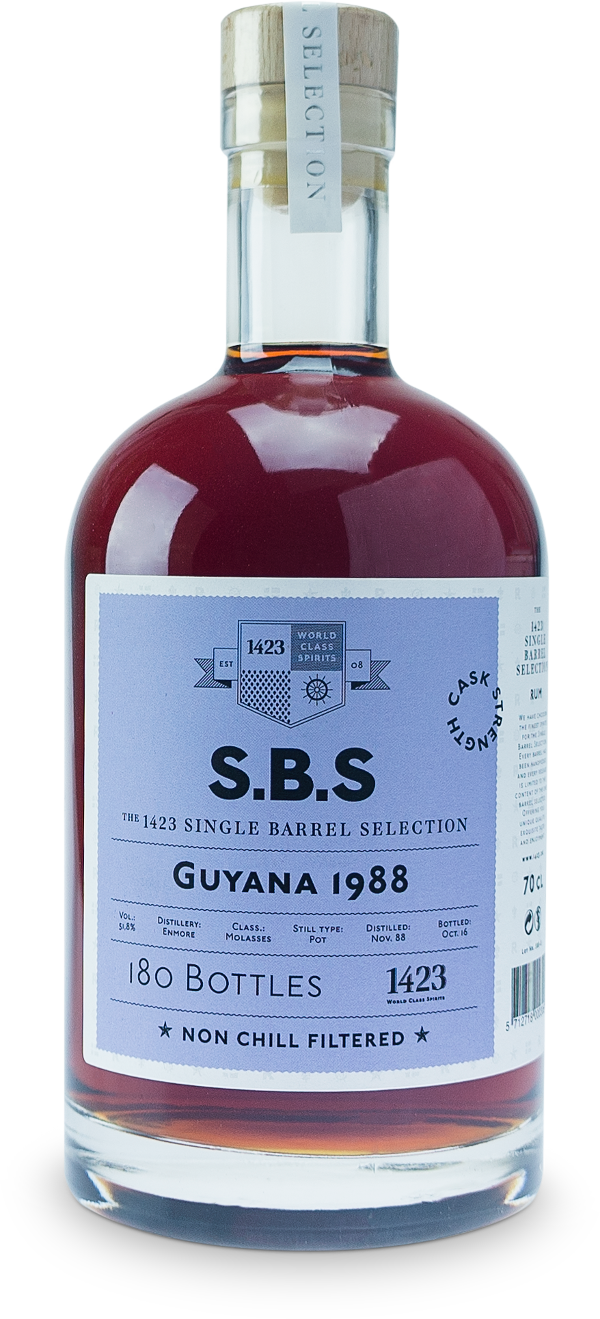
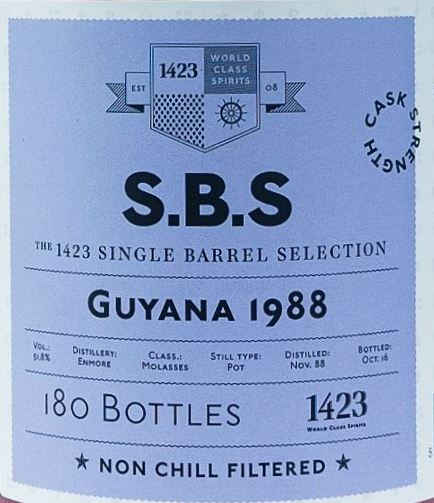 Now, there’s no doubt in my mind that this was as Guyanese as pepperpot and DDL – the real question is, which still made the rum? The label says it’s an Enmore from a pot still, all of SBS’s records (
Now, there’s no doubt in my mind that this was as Guyanese as pepperpot and DDL – the real question is, which still made the rum? The label says it’s an Enmore from a pot still, all of SBS’s records (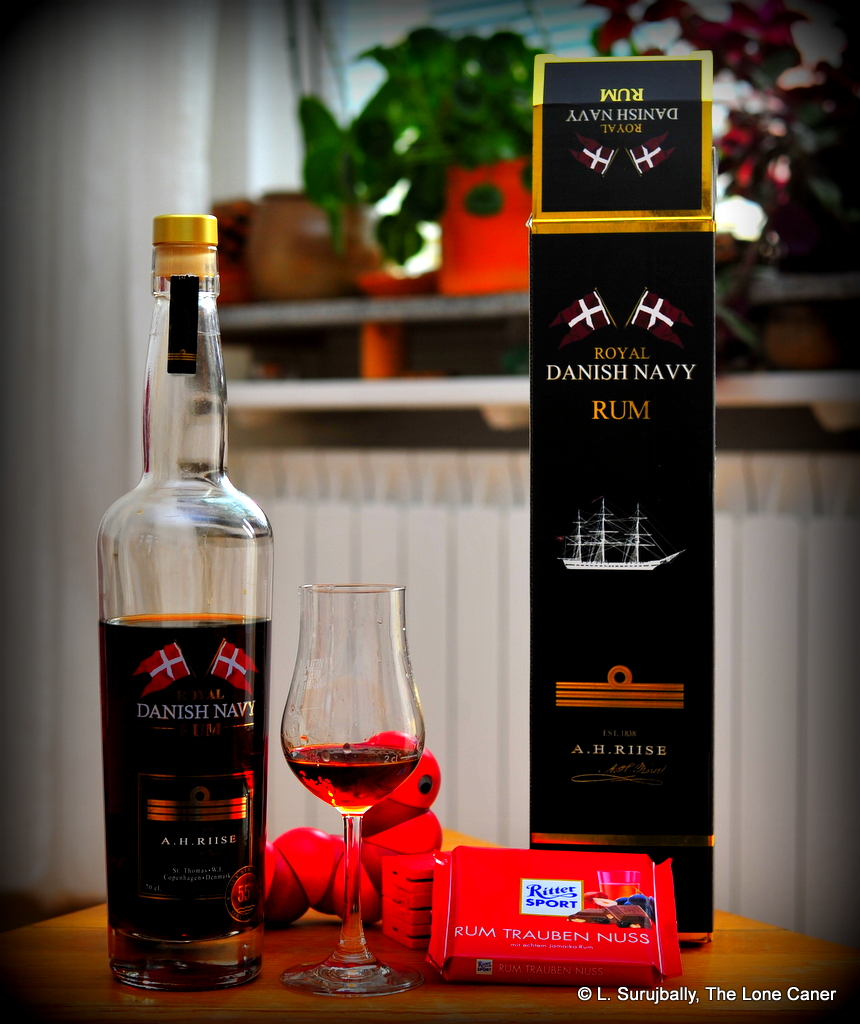 My mission, should I chose to accept it, is to get hammered on this crap. I drank it so you don’t have to.
My mission, should I chose to accept it, is to get hammered on this crap. I drank it so you don’t have to. 